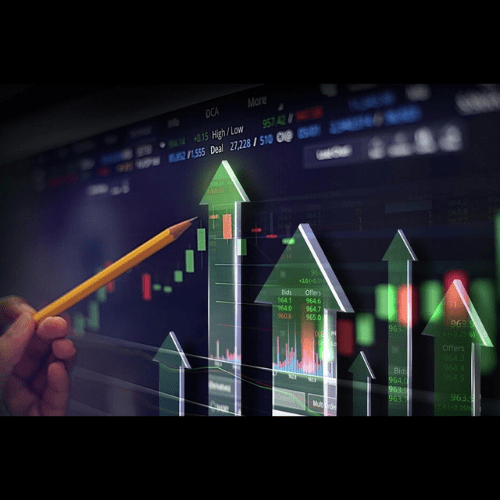As we progress through 2024, the global economic stage is presenting a mixture of resilience and uncertainty. The U.S. economy remains a key driver of global growth, a position it has solidified in recent International Monetary Fund (IMF) forecasts. Despite global growth forecasts of 3.1% for 2024, the U.S. continues to outpace other advanced economies, thanks to robust consumer demand, labor market strength, and steady investment. This resilience contrasts sharply with the Eurozone and China’s slower-than-expected recoveries, especially as China grapples with a protracted real estate crisis that weakens its economic momentum.
Interestingly, this global divergence is revealing deeper structural imbalances. Advanced economies, particularly in Europe, are feeling the squeeze of tighter credit conditions, softening demand, and high inflation. In contrast, the U.S. economy continues to demonstrate flexibility, with higher consumer spending and productivity gains helping to offset inflationary pressures.
The Resilience of U.S. Growth Amid Global Slowdowns
The U.S.’s standout performance in the global economy owes much to its well-balanced labor market and consumer spending patterns. While central banks globally have adopted tighter monetary policies to curb inflation, the U.S. Federal Reserve’s cautious approach to rate cuts has been a focal point of economic debate. The Fed’s reluctance to implement aggressive rate cuts, despite four key policymakers advocating for them, stems from concerns over persistent inflation, particularly in the service sectors. However, the conversation is shifting, with analysts suggesting that the Fed may start easing rates in the latter half of 2024. This would provide much-needed relief to the economy but requires a delicate balance to avoid reigniting inflationary pressures.
The Federal Reserve’s careful consideration of timing reflects the complexity of the U.S. economy’s current state. Growth remains strong, but underlying risks persist, including higher oil prices and geopolitical tensions that threaten to reignite inflation. The IMF underscores this caution, projecting that central banks should not ease prematurely, even as global inflation shows signs of softening. A premature rate cut could potentially undo the progress made in curbing inflation and throw financial markets back into turmoil.
Market Turmoil and Small-Cap Opportunities
In times of market instability, investors often flock to small-cap stocks, which tend to perform well in the face of volatility. Unlike large-cap companies, which may be more exposed to global risks like geopolitical shocks and inflation, small-cap companies can offer more agile and adaptable investment opportunities. This is especially true in sectors like technology and renewable energy, where innovation is happening at a faster pace, and small players are carving out market niches.
Market uncertainty in 2024, compounded by fluctuating interest rates and unpredictable geopolitical events, is creating fertile ground for small-cap stocks to break out. Their relative insulation from global supply chain issues and their focus on domestic markets make them more attractive during turbulent periods. Small-cap companies also tend to benefit from looser regulatory environments, which can allow for faster growth when compared to larger, more heavily scrutinized firms.
Nevertheless, small-cap investments are not without their risks. Higher volatility, fewer financial buffers, and greater sensitivity to domestic economic conditions mean investors need to weigh these opportunities carefully. Those seeking to capitalize on the potential upswing in small-cap performance must stay mindful of sector-specific risks and avoid the temptation to overexpose themselves to a single industry.
The Impact of Regulatory Changes and Legal Settlements
In the realm of financial regulations, 2024 has already seen significant developments, with the U.S. Securities and Exchange Commission (SEC) making waves through its regulatory enforcement actions. A recent $1.8 million settlement with an associate of short-seller Andrew Left has sent ripples through the financial industry, signaling that the SEC is taking a hard stance on market manipulation and insider trading.
This increased regulatory scrutiny is part of a broader trend aimed at restoring confidence in financial markets. As the SEC tightens its oversight, investors may see a shift in how they approach riskier investments, particularly in volatile sectors like biotech or emerging technologies. For investors who have traditionally leaned on speculative trades, the evolving regulatory environment demands a more cautious and strategic approach.
The Global Outlook: A Balancing Act
While the U.S. continues to lead in global growth projections, the international outlook remains fraught with uncertainty. China’s real estate struggles, Europe’s sluggish recovery, and persistent geopolitical risks—particularly the war in Ukraine—are shaping the global economic narrative for 2024. Energy prices, driven up by geopolitical conflicts and OPEC+ production cuts, have exacerbated inflation in energy-dependent regions. Meanwhile, tighter fiscal policies are challenging economies with high debt levels, especially those emerging from pandemic-era spending.
The IMF highlights that the road ahead involves navigating a complex set of risks, including disinflation, geopolitical volatility, and the ever-present danger of financial shocks. Countries with strong fiscal buffers are better positioned to weather these storms, but for others, the combination of high inflation, slowing growth, and reduced policy flexibility could spell trouble. In the U.S., the challenge will be to maintain its growth trajectory without tipping into inflationary excess or financial instability.
Conclusion: Opportunities Amid Uncertainty
As we head further into 2024, the global economy is a mosaic of divergent trends. The U.S. stands as a bulwark of growth, buoyed by strong consumer demand and a resilient labor market, while other advanced and emerging economies struggle to regain their footing. The Federal Reserve’s handling of interest rates will be critical, as will the response of small-cap stocks to ongoing market turmoil.
In these uncertain times, investors must stay vigilant, balancing the allure of high-growth opportunities against the inherent risks of volatile markets and shifting regulatory landscapes. With global dynamics in constant flux, adaptability and careful strategy will be key to navigating the economic challenges and opportunities that lie ahead.
by Steve Macalbry
Senior Editor,
BestGrowthStocks.Com
Disclaimer: The author of this article is not a licensed financial advisor. This article is intended for informational purposes only. It should not be considered financial or investment advice. We have not been compensated for the creation or distribution of this article and we do not hold any form of equity in the securities mentioned in this article. Always consult with a certified financial professional before making any financial decisions. Growth stocks carry a high degree of risk, and you could lose your entire investment.





